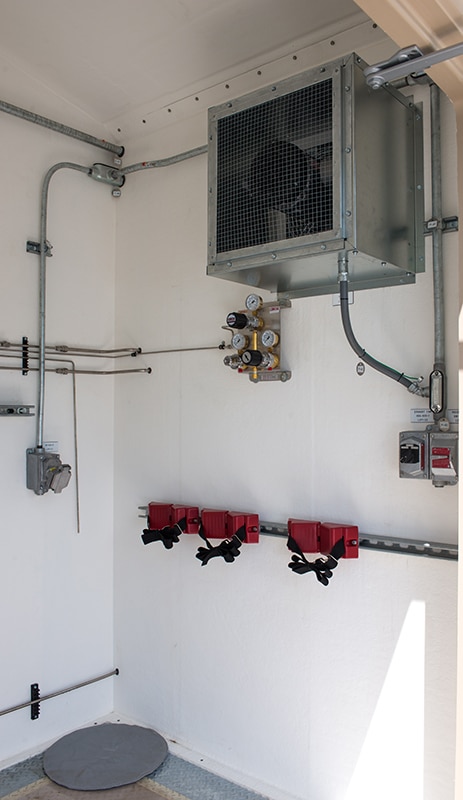
The safety instrumented system (SIS) in gas chromatograph buildings detects gas levels and if the concentration reaches a given level activates safety features, including an exhaust fan, alarm notification and beacon.
As an owner or operator, it is essential to minimize downtime, streamline operations and maximize operational efficiency to drive profits. The volume, BTU rating and composition of natural gas determines the price at which it is sold, so investing in accurate measurement is critical to ensuring natural gas is sold for its full value.
Currently at most custody transfers, spot sampling is used to determine an average composition of natural gas and set a price for it. Not only does this rely on the limited accuracy of a single sample that could be skewed by anomalies and is only measured once a month, but this also requires a technician to take the sample in the field and transport it to the lab, costing valuable man hours.
By using an online gas chromatograph, natural gas is analyzed more accurately and in real time. Using a hydrogen or helium carrier gas system, the gas chromatograph detects composition based on molecule size. Then, through a programmable logic controller (PLC), a live stream of the gas composition data is sent to the operator’s computer.
Installing a gas chromatograph in a control building allows the analyzer to operate in a hazard-free environment and allows the technician to work on equipment and monitor it in a climate-controlled area, free from adverse weather conditions.
“Our gas chromatograph buildings are designed by people who have worked in the field,” said Randy Sambursky, team leader. “Not only do we fully understand the codes, regulations and wiring methods for hazardous locations, but we are also looking out for the technician who is operating the gas chromatograph and overseeing the metering station.”
When a gas chromatograph building is designed, each 8-foot by 13-foot building has two independent sections, a Class 1 Division 2 rated hazardous side where the gas is sampled and analyzed and a non-hazardous side where the PLC control system and power supply is housed. This allows the building to function as a comfortable and safe field office for operators in addition to improving gas measurement accuracy and efficiency.
“We’ve had customers who use these buildings as a command center for their metering station, because the non-hazardous side is well designed for field office use,” said Sambursky. “We leave extra space for remote operated valve enclosures and customizations based on our client’s needs.”
The complete EPC delivery of skid-mounted gas chromatograph buildings means they are built remotely and then installed on site. The hazardous side of the building is equipped with safety instrumented system (SIS), which detects gas levels. At a given gas concentration, the PLC will automatically start the exhaust fan, turn on the safety beacon on top of the building and alert the operator through the PLC.
For operators with large interconnects or crossovers, a single gas chromatograph building can be designed to test three or six streams of gas at once. This reduces the need for many buildings to service multiple lines in a single location.
Gas chromatograph analyzer buildings offer several distinct advantages to help operators improve operational efficiency and maximize profits. By automating gas composition testing, operators save man hours and time spent in the field picking up and shipping gas cylinders for remote sampling and the ability to work on their equipment on days not suitable for remote mounted analyzers.
Additionally, the increased accuracy offered by the gas chromatograph’s real-time gas sampling and reporting protects against anomalies and ensures operators are paid for the quality of gas they are delivering.

















